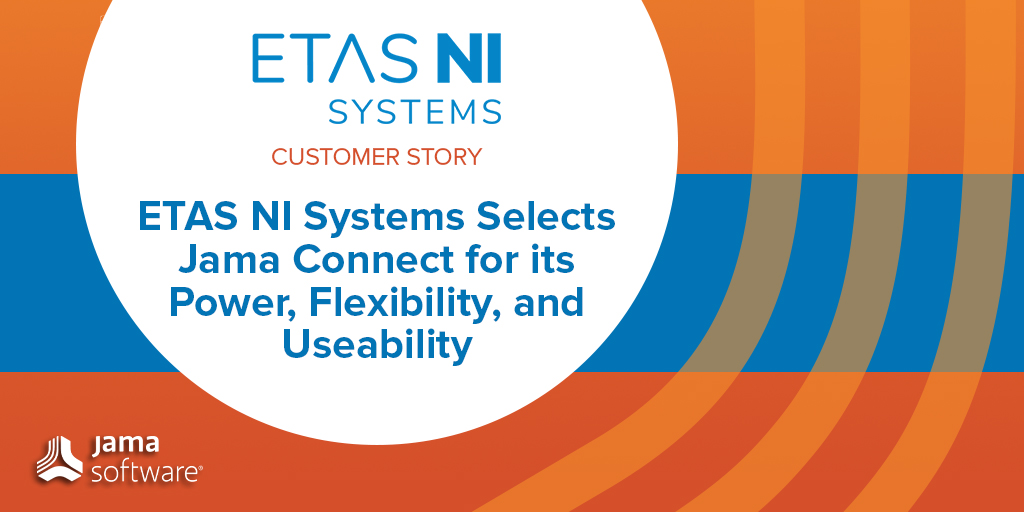
In the rapidly evolving automotive sector, driven by electrification and advanced driver assistance systems, ETAS NI Systems helps customers by designing, building, and servicing pre-integrated Hardware-in-the-Loop (HIL) systems.
Started in 2019 when National Instruments and ETAS GmbH joined forces to create a new venture, ETAS NI Systems now employs around 50 people and serves the automotive industry worldwide.
With a mission to improve testing and validation of software in automotive electronics, including electronic control units and sensors, ETAS NI Systems is working hard to keep automotive development safe.
As a newly formed company, ETAS NI Systems didn’t waste any time before evaluating and implementing a requirements management solution. They knew that there was too much at stake.
Searching for a Requirements Management Platform
ETAS NI Systems knew they had a shot to get their product development process right from the very beginning, and that selecting the right requirements management platform was key to their success.
“I had worked with powerful requirements management solutions in the past, and I knew that using something like Word and Excel weren’t an option for our team,” said Hans-Peter Dürr, Technical Director at ETAS NI Systems. “They don’t provide the flexibility required for our complex projects.”
With all options on the table, the team began their evaluation process knowing that the requirements management solution must help them with the following challenges:
Demonstrating Compliance
Because ETAS NI Systems works with automotive companies worldwide, they needed to find a system that helps their clients demonstrate compliance with industry regulations and standards. Many of their clients must comply with a variety of regional safety and compliance standards (e.g., IEC61010), and without a structured requirements management solution, proving compliance would be manual and time consuming for the ETAS NI team.
Reusing Requirements
Across Multiple Projects The team estimates that more than 70% of requirements can be used across projects, especially when it comes to demonstrating regulatory compliance. Therefore, it was crucial that ETAS NI Systems find a solution that would allow them to save valuable development time by having the ability to easily reusing requirements across multiple projects.
Getting Up and Running Quickly Without In-house Tool Expertise
Above all, the team knew they needed a solution that they could and would actually use.
“There are a ton of powerful requirements management solutions out on the market… but they require in-house expertise or months of training, and they’re still difficult to use. We needed a solution that we could get up and going quickly with and could easily train our teams how to use,” said Dürr.
RELATED: Watch a demonstration of the Jama Connect for Automotive Solution
Evaluating the Highest Rated Requirements Management Tools
The ETAS NI Systems evaluation process was not short, nor was it simple – it was months long and included more than 20 different solutions. After a comprehensive evaluation of all available requirements management solutions, ETAS NI Systems selected Jama Connect because it was the only solution on the market that:
- Provided a single source of truth for organizational visibility
- Offered the flexibility and power required for complex product development
- Had an easy-to-use platform that didn’t require in-house expertise or extensive training
Not only did Jama Connect fit the bill for useability, but it also had all the functionality and power ETAS NI Systems needed to improve testing and validation of software in automotive electronics.
“The user experience was very important to us. We needed to find a tool that was web-based, customizable, and easy to use. We found that and more in Jama Connect,” said Dürr.
Download the full customer story to see the results of new partnership between ETAS NI and Jama Software.
